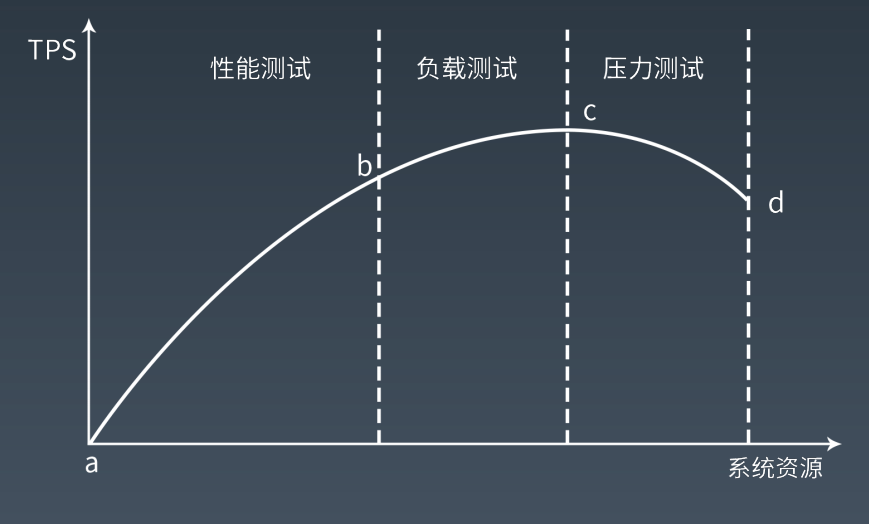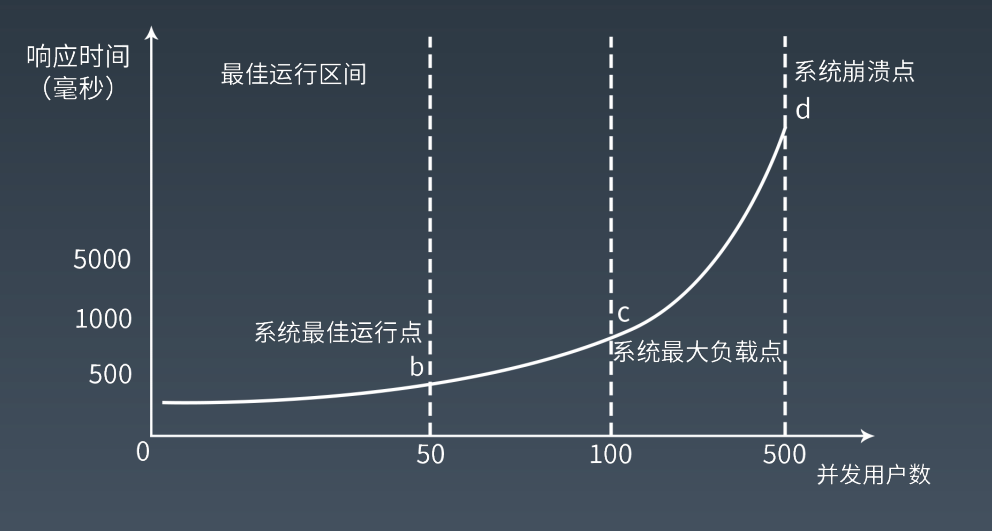架构师训练营 1 期 - 第七周 - 性能优化 1
问题:
性能压测的时候,随着并发压力的增加,系统响应时间和吞吐量如何变化,为什么?
用你熟悉的编程语言写一个 Web 性能压测工具,输入参数:URL,请求总次数,并发数。输出参数:平均响应时间,95% 响应时间。用这个测试工具以 10 并发、100 次请求压测 www.baidu.com。
解 1:

图 1

图 2
如上图 1 为性能压测的时候随着并发压力的增加,系统响应吞吐量的变化曲线,解释如下:
系统刚开始资源充足,随着并发的增大,系统的吞吐量(TPS)线性增大,见图种 a-b 段;
当并发增大到一定大小,系统资源消耗增大,不足以支撑系统的吞吐量与并发数呈线性增长的态势,支撑系统的吞吐量增长变缓,见图 b-c 段;
当并发继续增大,系统资源消耗慢慢耗尽,此时系统吞吐量不增反降,直到系统资料耗尽,到系统奔溃点后,系统吞吐量为 0. 这个阶段曲线见图 c-d 段;
如上图 2 为性能压测的时候随着并发压力的增加,系统响应时间的变化曲线,解释如下:
系统刚开始资源充足,随着并发的增大,系统的响应时间比较块而且稳定,见图种 a-b 段;
当并发增大到一定大小,系统资源消耗增大,不足以支撑系统的吞吐量与并发数呈线性增长的态势,这个阶段系统响应时间随着并发的增大逐渐增大,见图 b-c 段;
当并发继续增大,系统资源消耗慢慢耗尽,此时系统吞吐量不增反降,响应时间也急剧增大,直到系统资料耗尽,到系统奔溃点后,系统吞吐量为 0,系统没有了响应。 这个阶段曲线见图 c-d 段;
解 2:
本题用 java 来实现
复制代码
复制代码
复制代码
输入参数 URL:http://www.baidu.com,请求总次数:100,并发数 10
响应参数:
平局响应时间(毫秒):30
95% 响应时间:32












评论